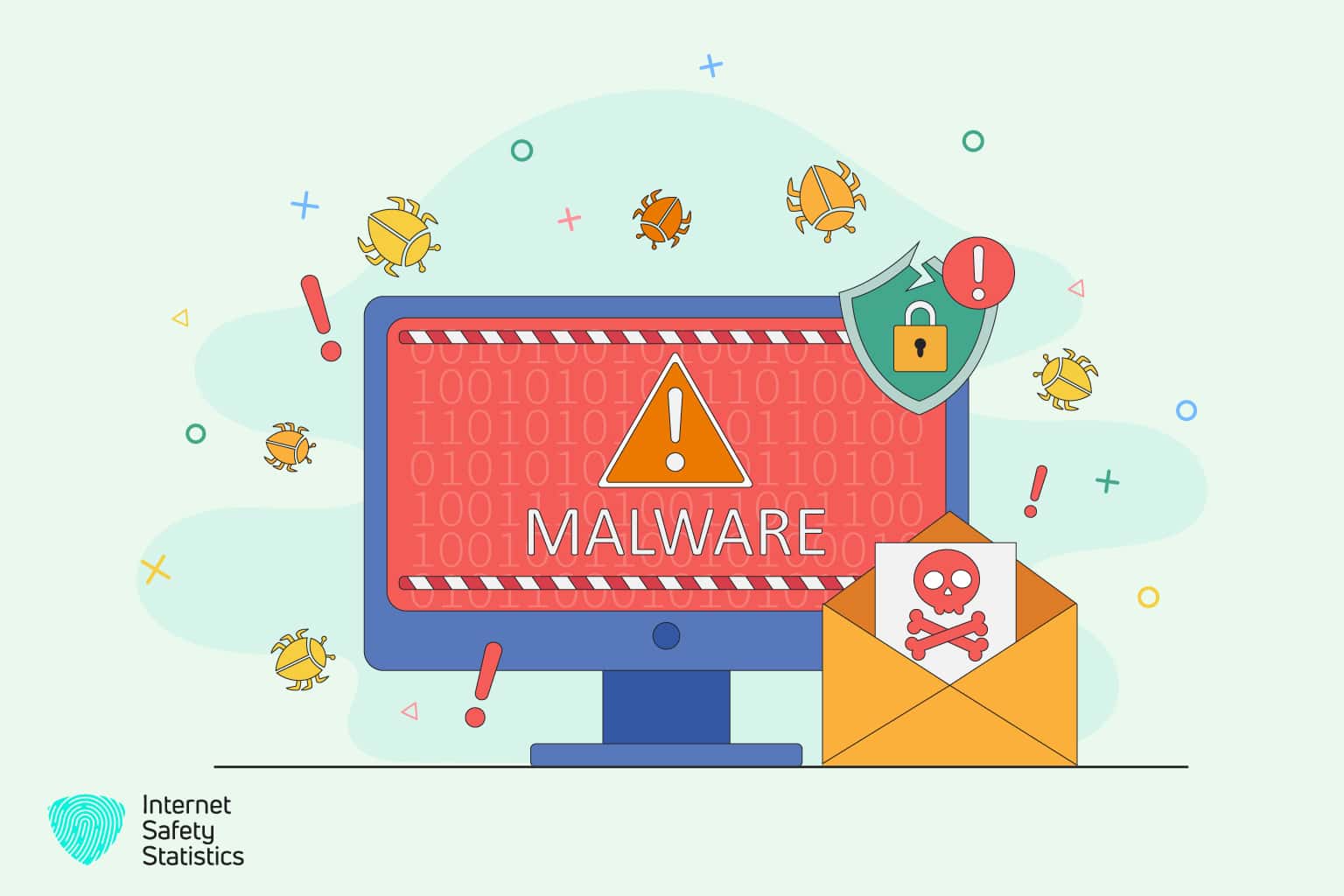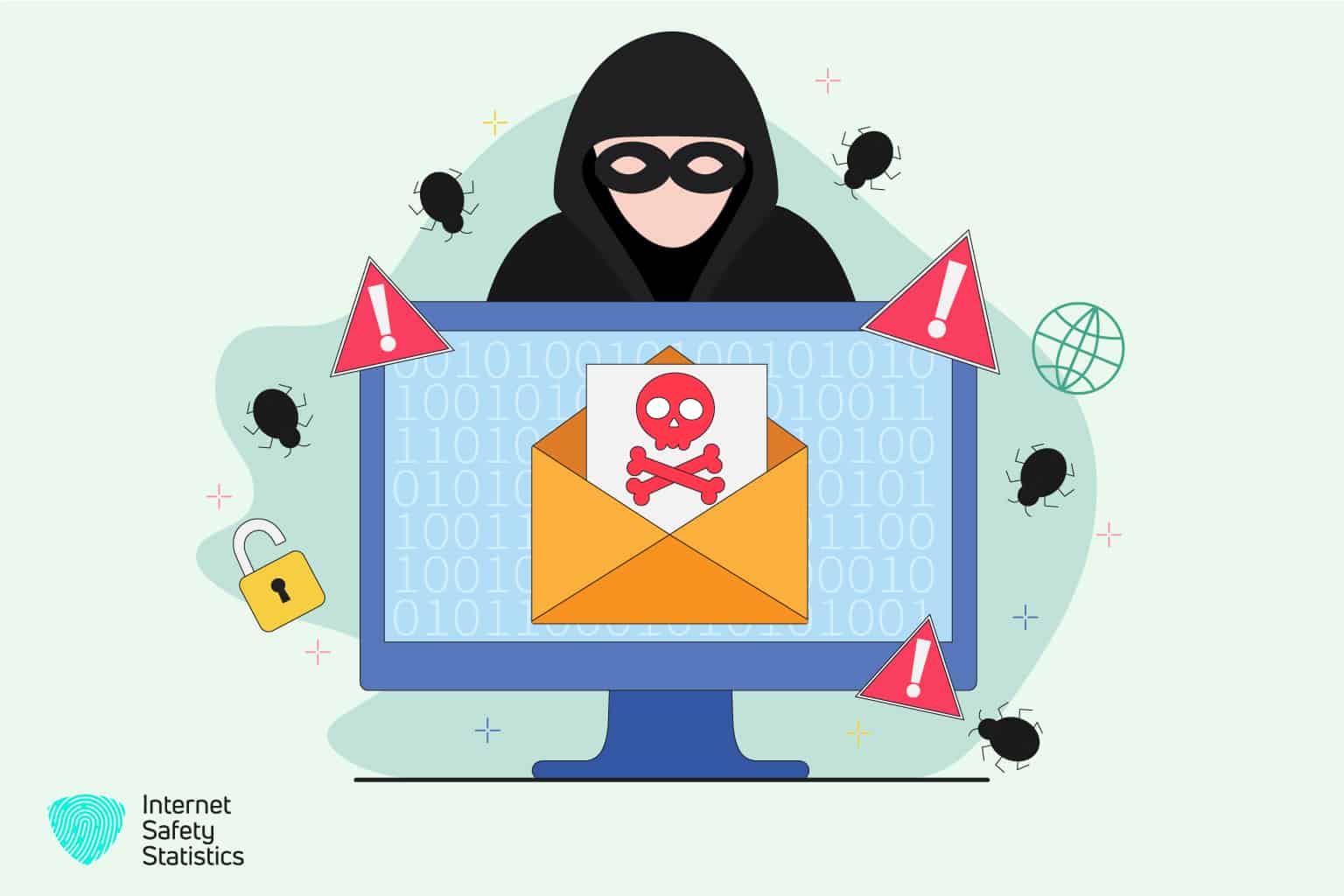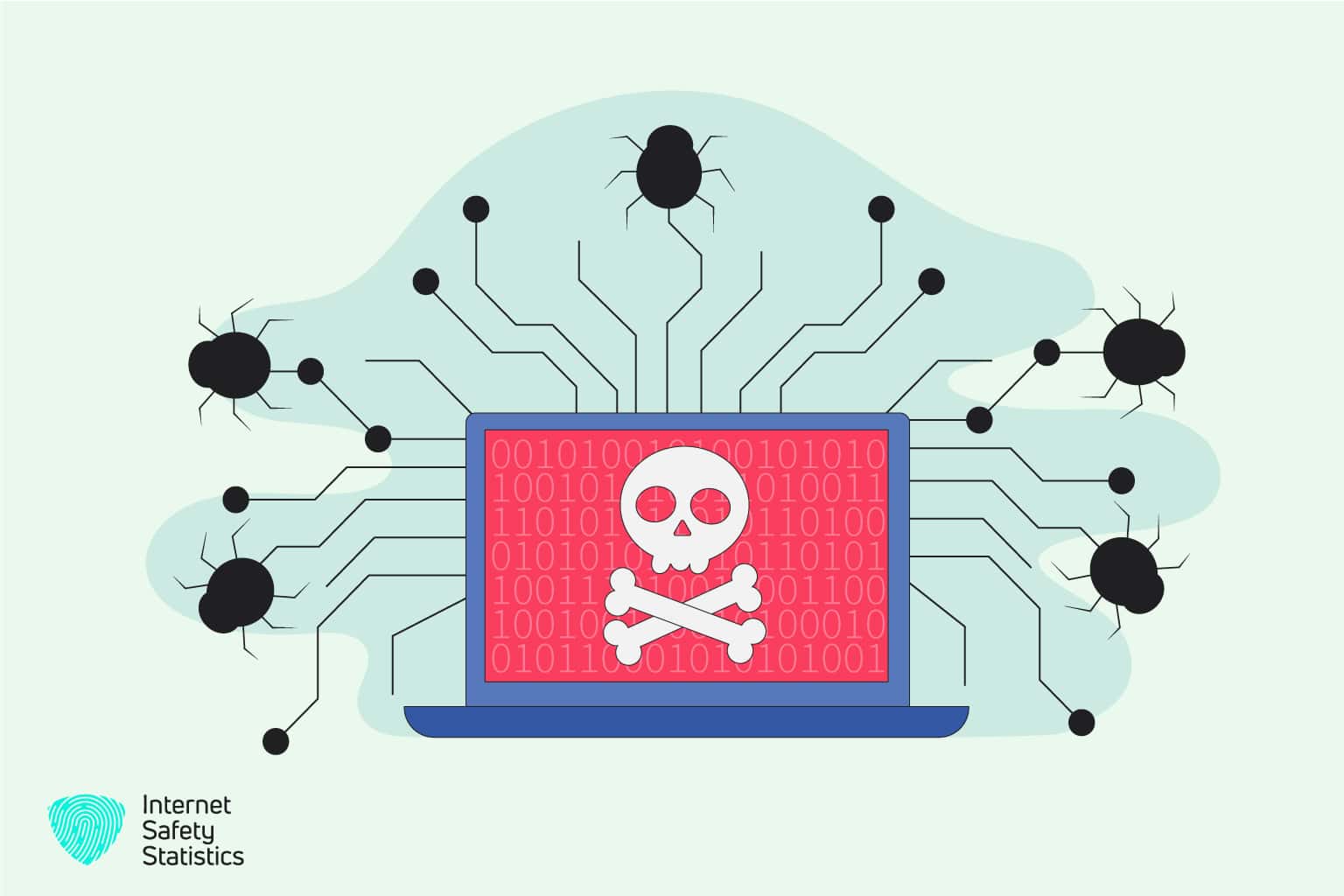
Hackers use numerous means to conduct a cybersecurity attack; they constantly develop these methods to keep up with the development of cybersecurity techniques. As a cybersecurity threat, malware attacks are the biggest threat to your data and your organisation. These malicious factors have developed significantly in the past years, and we’ve heard more about them in the news.
The term Malware includes more than 20 types, and each has its features and the way it works and spreads into the system. The following article will discuss the different types of malware attacks, the tools malware uses to spread in the system and what you can do to protect yourself from it.
What is a Malware Attack?
A malware attack is when the hacker uses malicious software to infect the victim’s computer and gain access to their data without their consent. Initially, cybercriminals developed malware software to trick the end user, but it evolved into a means of gaining unauthorised access to computers and raising monetary profits. The key to considering the use of any tool as malware is the attacker’s intention; if they aim to use it to profit by encrypting data and asking for ransom or stealing sensitive data.

Attackers look for common vulnerabilities in the victim’s operating system to use as entry points or by looking through the excess permissions granted to users as another way in. There are standard methods the attacker uses to gain unauthorised access to the system, such as phishing, where malicious links hide in seemingly legitimate emails and ransomware attacks, where the attacker encrypts the victim’s data and asks for a ransom in exchange for the encryption key.
There are more complicated malware tools, such as the Command and Control tool, where the attacker can communicate with the hacked system and conduct operations. More advanced tools include using techniques of evasion and obfuscation to trick the users, administrators and even anti-malware programmes into believing nothing is wrong with the system. These tools work on obscuring the IP address and fileless malware.
Types of Malware Attacks
Each type of malware attack has its own features and works differently inside the system. We will cover these types and provide an illustrative example for each of them:
Computer Viruses
Computer viruses are malware that modifies the computer’s programmes by inserting their code, which allows the viruses to self-replicate and infect other programmes on the computer. Typical entry points that virus writers use include system vulnerabilities and social engineering.
Microsoft and Mac operating systems get the majority of computer virus attacks, which use advanced tools to evade antivirus software. The most distinctive feature of a computer virus is that for it self-replicate, the infected application must be running, and the virus can then alter the code for self-replication.
Computer viruses can be deployed for multiple reasons, to make illicit profits as ransomware does, to expose system vulnerabilities or for sheer amusement. Additionally, they can be used to demonstrate power over the victim, to sabotage services by denying system services, or even to explore the technical system of the victim’s computer and network.
Even though some of the previously-mentioned reasons don’t sound very dangerous, infection by computer viruses causes billions of monetary losses each year by obstructing services, causing system fails and data corruption, increasing the cost of maintenance and causing loss of personal information, just to name a few damages.
Computer Worms
A computer worm is also a self-replicating malware, like viruses, which aims to infect other computers on the network. The worm does that by staying active on the infected computers while self-replicating into new computers. Worms gain access from one computer to another by exploiting security failures or possible vulnerabilities on the new target computer.
Unlike viruses, which can cause severe damage, worms cause much less harm; sometimes, all they do is just consume the victim’s bandwidth. However, this doesn’t mean that worms can’t cause severe damage; they can cause significant system disruptions. An example of this can be the Morris worm which significantly increased network traffic and stopped services.
To ensure you are safe from computer worms, you need to ensure that all your computer devices are patched and up to date, and you can also use scanning software for your emails and firewalls to make sure any received files or links don’t contain harmful malware.
The Trojan Horse
The Trojan Horse derives its name from the historical Greek story of the Trojan Horse, used to trick the people of Troy and gain access into the city. Often referred to as Trojan, it is a form of malware that disguises itself as a legitimate programme, hence misleading the users of its existence in the system. Trojans are commonly spread through phishing and social engineering; an example can be when a user opens a file attachment that contains the malware; when the file is executed, the trojan is installed on the computer.
Trojans provide the attacker access to information on the infected computer, allowing them to steal vital information such as banking information or other sensitive data. This feature distinguishes trojans from viruses and worms because trojans don’t self-replicate to infect other devices; they are installed with a specified target.
Rootkits
A rootkit, as part of malware attacks, is a collection of malware designed to give the attacker unauthorised access to the victim’s computer or a section of its software. A rootkit attack can either be automated or installed by the attacker through unauthorised administrative access, which can happen through system vulnerabilities, phishing attempts, or stolen passwords.
It’s challenging to detect rootkits because they can disguise themselves, hence, making it hard for the detection software to find them. You can track behaviour differences by scanning, use trusted operating systems only, and use signature scanning to catch them. It’s better to be safe than sorry because it’s almost impossible to remove rootkits from the system, and at times you might need to replace the hardware.
Ransomware
Ransomware is a type of malware designed specifically to encrypt data on the infected computer and deny access to it until a ransom is paid. It is one of the easily spread types of malware; it’s easily embedded in phishing attempts through emails or bogus websites, exploiting system vulnerabilities or malvertising. The effects of ransomware are worse than the types of malware mentioned above; it causes data corruption or leakage, data breaches, intellectual property theft, and service downtime.
The worst part about ransomware is you can’t guarantee the attacker will give you the data encryption key back after you’ve paid the ransom. For this reason, it’s imperative to constantly back up your system and data, preferably to off-site devices. Ransomware causes losses of millions of dollars every year; you cannot track the ransom because it’s usually paid in bitcoin. The RobbinHood ransomware attack on the city of Baltimore caused more than $18 million in losses, in addition to obstructing government services.
Keylogger
As the name suggests, Keylogger is a form of malware designed to track and record the stroke of each button on the keyboard of the targeted computer. The data stored by keyloggers are sent to the attacker, who can then extract the information he wants, such as login credentials or credit card information.
On the other side, keyloggers have a legitimate purpose where employers use them to keep track of their employee’s work, and even families can use them to keep a watchful eye on their children’s activity online.
Grayware
Grayware is a relatively new term in the cybersecurity attack field. It is used to describe any unwanted files or computer applications that slow down the device’s performance or make it worse, ultimately putting the device at risk of a cybersecurity attack. So, it can either disrupt your time on your device or monitor your device and transfer information back to the source.
Luckily, grayware can be removed by the majority of antivirus software that will warn you of unwanted files or applications on your device. Your concern should be how the grayware accessed your system, whether through a system vulnerability, phishing, or social engineering. If your antivirus software spotted adware, you could expect there’s some sort of vulnerability that might allow grayware in.
Fileless Malware
Fileless malware is one of the hardest malware to detect because it uses authentic programmes to infect a device, leaves no trace, doesn’t leave a footprint in any files, and solely exists in the computer’s memory, the RAM. This feature makes it even harder for anti-malware software to detect and handle. It’s pointless to use forensic strategies, such as signature detection and hardware verification, to prevent fileless malware attacks.
At times, the only means of getting rid of fileless malware is rebooting the system since it works in the computer’s memory and not in files or applications. Several organisations, such as Equifax, have fallen victim to fileless malware in the past years.
Adware
Adware is a type of grayware designed to put pop-up ads on the screen, like when you’re browsing the internet. This grayware will present itself as authentic or as a means to get you to install another programme on your device. Despite its popularity on both computers and mobile phones, adware is one of the least harmful malware. The profits gained from malware are huge, though, since the advertisement will automatically start playing, whether you click on it or not.
Malvertising
Malvertising or malicious advertising is embedding malware in advertisements that look legitimate and then putting the ads up on legitimate websites and networks. Advertising is the perfect tool to use in spreading malware; this is because significant effort is put into the ads to make them appealing and attract users. The problem with malvertising is that the attacker puts the ads up on trusted or high-profile websites, which plays a role in reassuring the users of the legitimacy of the advertisements.
Spyware
Spyware is a form of malware that gathers information about the victim or targeted organisation through their computers. It sends this information back to the attacker without the victim’s knowledge or consent. The purpose behind using spyware can be to steal your banking information or sensitive data from your device and sell it on the black market.
The good news is that spyware is easily detected and removed by the proper software, even if the spyware installed additional software on your device to change the device’s settings.
Bots and Botnets
A bot is a programme that performs automated tasks on command and can be used legitimately for indexing search engines, for example. However, with malicious intent, a bot is a malware-infected computer controlled by the attacker, who can then use the computer to launch more attacks or form a botnet.
A botnet is a group of bots, malware-infected computers, that are used to spread malware, organise distributed denial-of-service attacks and keylogging. The number of bots in a botnet must be massive, almost up to 1 million computers, which are used to organise automated attacks.
The Backdoor
A backdoor is one of the methods to get bypass the targeted device’s encryption or authentication in order to give the attacker access to the device. The attacker uses this method to gather information or even corrupt or delete them. A backdoor has many forms; it can be a trojan horse, hidden code, or a separate programme on the device.
In most cases, it’s harmful to have a backdoor on your device, but in some cases, it can be the only way a manufacturer, for example, can access the user’s device to reset their passwords.
The Browser Hijacker
Known as hijackware as well, this form of malware manipulates the behaviour of the user’s browser. This process can be done by directing the user to a different web page, installing unnecessary toolbars on the computer, changing the browser’s homepage, or even playing unwanted ads on the screen.
Crimeware
Crimeware is the primary identity theft type of malware; it aims to steal the victim’s financial information through phishing or social engineering to directly steal money from the victim’s accounts or use the information to buy goods online. If the stolen data is part of a corporation database, this can cause more financial damage or even be used as part of corporate espionage. Cybercrimes committed using crimeware are frequently automated.
Malicious Mobile Applications
You can download mobile applications through several mobile stores, such as Google Play and the App Store. However, not all available applications are safe to download; the App Store provides prescreening of third-party applications before adding them to the store. Malicious mobile applications have severe and dangerous effects; they can steal the user’s information or install backdoors onto your device; they can use your information to gain access to corporate data, especially if you use your device to access work-related files.
RAM Scraper
A RAM scraper is a malware that targets data stored in the RAM or device memory and often targets RAMs that store unencrypted data, such as that of a cash register. The reason for this is that the RAM can store unencrypted credit card information for some time before it is fully encrypted before it reaches the back end.
Rogue Security Software
The rogue security software malware is a tricky malware that has the victim believing their device has a virus and asking them to install a suggested software to get rid of the virus. In reality, the recommended programme is the malware that needs to be removed.
Cryptojacking
Cryptojacking is a type of malware that accesses the victim’s device, computer, mobile, or tablet without authorisation and mines for cryptocurrency. Usually, the attacker uses the device’s resources for mining, such as its electrical power. The most frequently used cryptocurrency is Bitcoin, but there are almost 3,000 other types of cryptocurrencies.
Hybrid Malware
In recent years, many malware attacks were, in fact, a combination of several types of malware, such as viruses, trojan horses, worms, and ransomware. For example, a programme that seems to be a trojan might turn out to be a worm, and when executed, it tries to replicate itself and infect other computers on the network.
Phishing and Social Engineering
Phishing and social engineering are not actually types of malware; they are tools that help execute malware attacks. For example, the attacker can send a seemingly-authenticated email with malicious attachments or links to get the victim to download the attachments or open the link in order to steal their information.
Bugs
Bugs are another tool for opening the door for malware to infect your device; they are used to detect vulnerabilities in the system, which can then be exploited by malware. One of the widely-known examples was a vulnerability in Windows OS called EternalBlue. This vulnerability was the door used by the WannaCry ransomware several years back to spread into Windows-operated devices.
How Does Malware Spread Into the System?

Now that we’ve gone through all the types of malware attacks, we can discover the different ways malware uses to infiltrate computer systems and spread inside. There are six ways malware uses to spread:
Vulnerabilities in the Device or System
System or device vulnerabilities are flaws in the system that give malware unauthorised access to the system. Common vulnerabilities include unpatched programmes, access control breakage, and authentication breakage.
Backdoors
A backdoor is one of the methods a legitimate or illegitimate user can exploit to bypass security measures in the system. A legitimate user can use backdoors as a means to gain a higher access level, such as root level, for example.
Drive-by Downloads
This method is when the victim unintentionally downloads software online but without knowledge of the developer or person behind the download, the attacker.
Privilege Escalation
When the attacker gains unauthorised access to the victim’s computer, then uses this access to elevate their privilege level to reach their goal.
Homogeneity
A worm can successfully replicate itself over the same network of computers if they are all using the same operating system and network.
Blended Threats
These are like hybrid malware, where the malware attack is conducted using several types of malware, making them harder to detect and causing more significant damage.
How to Detect and Remove Malware?
We have seen that malware attacks in the past years are a combination of several types of malware, which makes detecting and removing the malware more complicated than it seems. Several malware attacks start as worms which add the victim’s computer to a botnet, hence giving the attacker remote control of the victim’s device.
If by chance you saw the malware executables in your processes, you can then proceed with removing it, but fileless malware makes this more difficult. You also cannot be entirely sure that the infection has been removed from your device; you might need to have all your data backed up and boot your device.
For these reasons, it’s better to protect yourself from contracting malware in the first place:
As an Individual
Monitor any possible vulnerabilities on your system, have your systems patched, beware of third-party and fourth-party risks, and, most importantly, learn how to properly scan any links, attachments, or downloads online before executing them.
As an Organisation
There are several steps you need to consider:
- Ensure that your vendors keep their systems in check so they wouldn’t risk your secure network.
- Make sure to train your users on the dangers of social engineering and phishing, and make sure they properly scan everything they receive.
- Employ Managed Detection and Response Services (MDR), which act as an extension of your security team, to help ensure your network is safe, updated, and scanned for any possible vulnerabilities.
At times, prevention might seem like a lot of work, but it’s not the same as the amount of work you might need to put in if your device is infected with malware. Please keep in mind prevention is always better than cure, so it’s imperative to keep yourself and your data safe from falling victim to cyberattacks.
